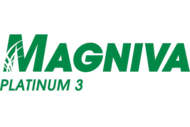To assess silage quality and better target areas for improvement, Lallemand Animal Nutrition developed a silage audit method based on a set of practical evaluation criteria:
- pH
- Temperature
- Density
- Packing
Scientific analysis of surveys performed in France, Greece and Italy on a total of 149 corn silos revealed:
- Silo densities are quite low with only 36% of bunkers packed correctly
- High densities are obtained when good silage practices (harvest, filling and packing) are combined with the correct silo parameters (silo design, silo height, etc.)
Silage management practices based on silage audit
Lallemand Animal Nutrition on-farm silage audits have been used worldwide and validated under various conditions including on-farm, large-scale demonstrations in different seasons. This tool helps producers identify and improve their silage management practices in four critical areas.
1.pH
pH is measured to evaluate acidification and aerobic stability. It can be measured using a simple pH strip or pH probe. The optimal pH value depends on the forage dry matter (DM) and forage type.
2.Temperature
Temperature helps determine the aerobic stability of the silage. The goal is to have less than a 35˚ F, or 2˚ C, difference between the ambient temperature and the silage front-face temperature. If the difference is greater, then silage is more prone to spoilage
3.Density
The optimal average density depends on the forage type and DM level. A silage structure with adequate density limits the amount of air ingress, which reduces the opportunity for spoilage. Silage density can be measured by taking core samples.
4.Packing
Proper packing weight is critical to squeeze out oxygen from the silage structure. This helps improve aerobic stability and reduce spoilage.
Adequate packing can be determined by calculating the packing weight of the tractor. The estimated amount of packing weight in pounds needed can be calculated by multiplying the estimated tons of DM delivered to the silo in an hour by 800. The estimated packing weight in kilograms can be calculated by multiplying the estimated ton of DM delivered to the silo in an hour by 365. A web-based spreadsheet developed by the University of Wisconsin for calculation of packing density can be accessed at fyi.uwex.edu.
Request an Audit
Request an audit by contacting Lallemand Animal Nutrition. The audit can help assess your silage quality and target areas for improvement specific to your operation.






